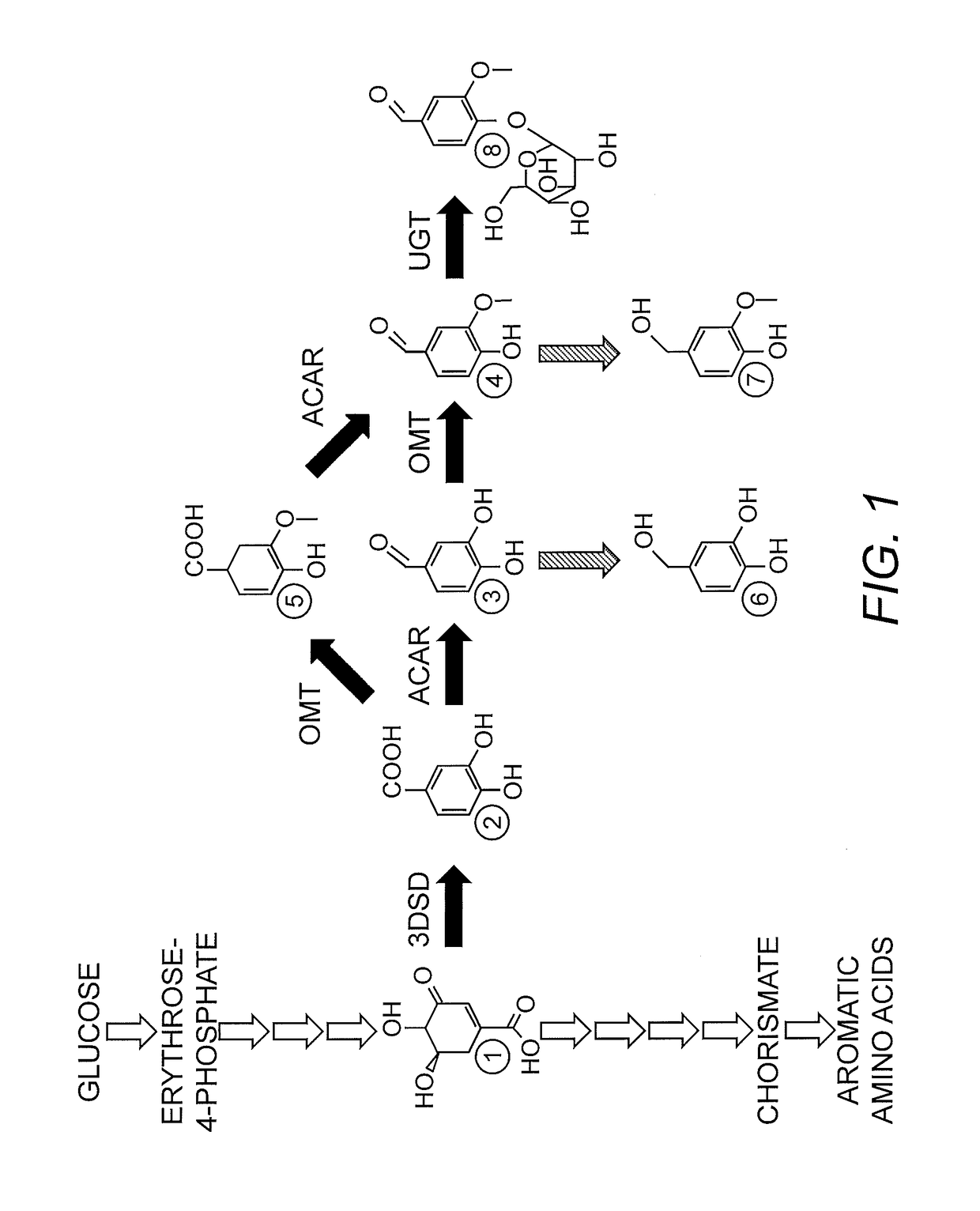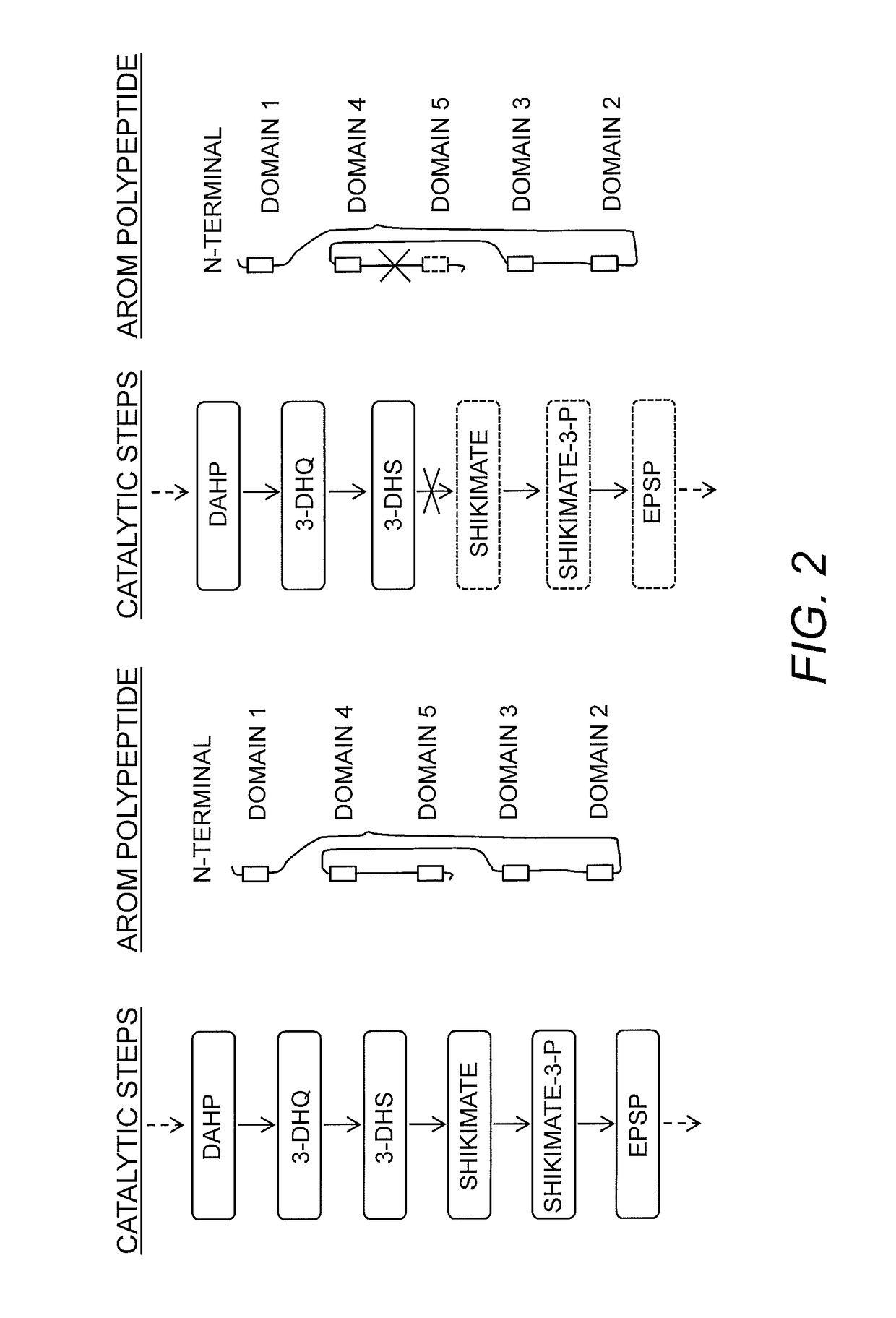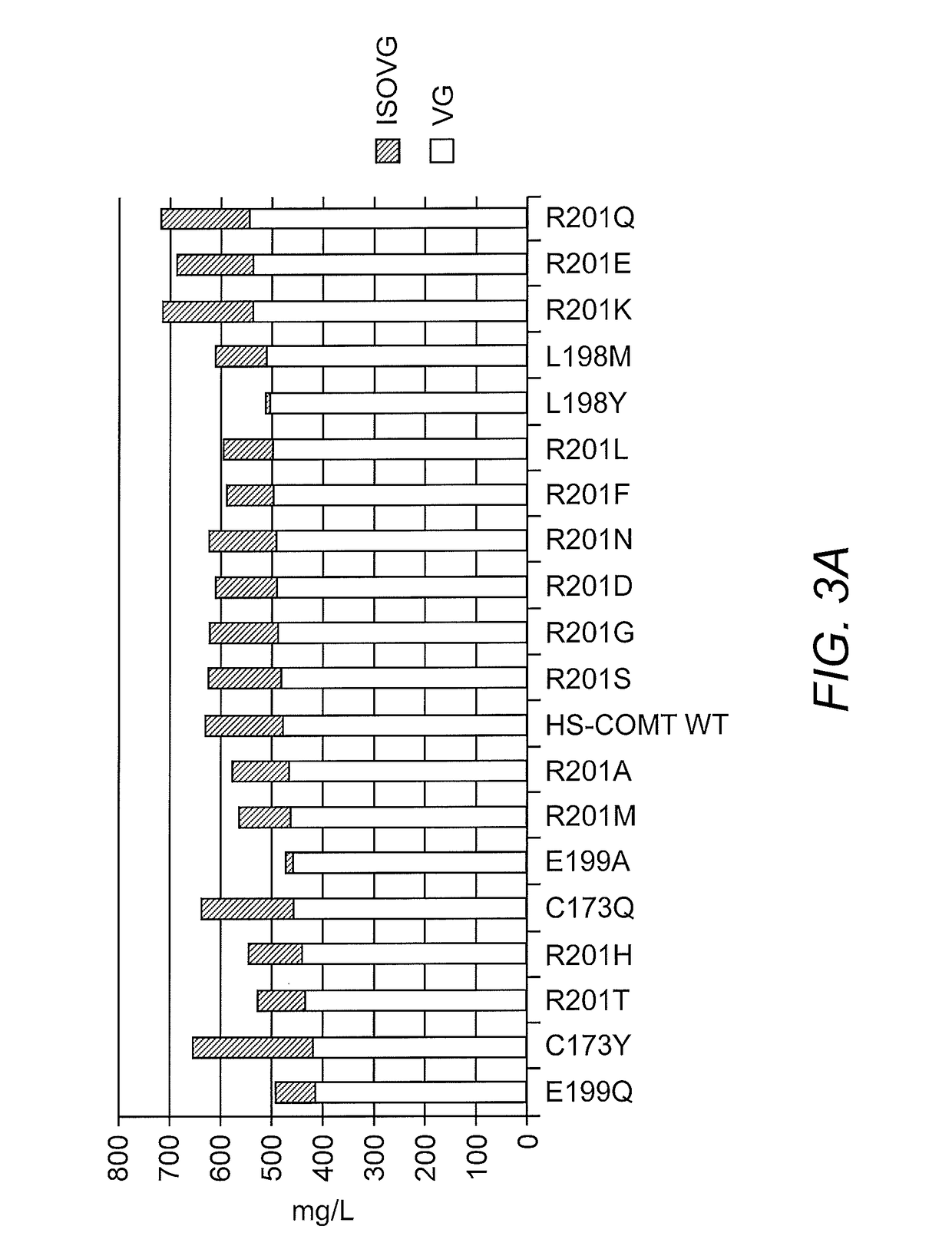Compositions and methods for the biosynthesis of vanillan or vanillin beta-D-glucoside
a technology of biosynthesis and vanilla, applied in the direction of lyase, transferase, peptide, etc., can solve the problems of laborious and slow process of natural vanillin production from the vanilla pod, and achieve the effect of improving properties
- Summary
- Abstract
- Description
- Claims
- Application Information
AI Technical Summary
Problems solved by technology
Method used
Image
Examples
example 1
orter Strain for Producing Vanillin Glucoside from Glucose
[0152]A genetically stable yeast strain producing vanillin glucoside from glucose was created as described in Brochado, et al. (2010) Microb. Cell Fact. 9:84, i.e., strain VG4 with a gene deletion of PDC1 (Pyruvate decarboxylase) and GDH1 (Glutamate dehydrogenase), and overexpressing GDH2. In addition, the strain harbored an expression construct containing a PPTase integrated into the ECM3 inter-locus region of the yeast genome. Expression of the Corynebacterium giutamicum PPTase coding sequence was controlled by the yeast TPI1 promoter (Hansen, et al. (2009) Appl. Environ. Microbiol. 75(9):2765-74. Epub 2009 Mar. 13). The resulting strain was designated V12.
example 2
ion of an AROM Lacking Domain 5
[0153]The 5′-nearest 3912 bp of the yeast ARO1 gene, which includes all functional domains except domain 5 (having the shikimate dehydrogenase activity), was isolated by PCR amplification from genomic DNA prepared from S. cerevisiae strain S288C, using proof-reading PCR polymerase. The resulting DNA fragment was sub-cloned into the pTOPO vector and sequenced to confirm the DNA sequence. The nucleic acid sequence and corresponding amino acid sequence are presented in SEQ ID NO:1 and SEQ ID NO:2, respectively. This fragment was subjected to a restriction digest with SpeI and SalI and cloned into the corresponding restriction sites in the high copy number yeast expression vector p426-GPD (a 2μ-based vector), from which the inserted gene can be expressed by the strong, constitutive yeast GPD1 promoter. The resulting plasmid was designated pVAN133.
example 3
M with Single Amino Acid Substitutions in Domain 5
[0154]All mutant AROM polypeptides described in this example are polypeptides of SEQ ID NO:4, wherein one amino acid has been substituted for another amino acid. The mutant AROM polypeptides are named as follows: XnnnY, where nnn indicates the position in SEQ ID NO:4 of the amino acid, which is substituted, X is the one letter code for the amino acid in position nnn in SEQ ID NO:4 and Y is the one letter code for the amino acid substituting X. By way of example A1533P refers to a mutant AROM polypeptide of SEQ ID NO:4, where the alanine at position 1533 is replaced with a proline.
[0155]The full 4764 bp yeast ARO1 gene was isolated by PCR amplification from genomic DNA prepared from S. cerevisiae strain S288C, using proof-reading PCR polymerase. The resulting DNA fragment was sub-cloned into the pTOPO vector and sequenced to confirm the DNA sequence. The nucleic acid sequence and corresponding amino acid sequence are presented in SEQ ...
PUM
| Property | Measurement | Unit |
|---|---|---|
| total thickness | aaaaa | aaaaa |
| total thickness | aaaaa | aaaaa |
| total thickness | aaaaa | aaaaa |
Abstract
Description
Claims
Application Information
 Login to View More
Login to View More - R&D
- Intellectual Property
- Life Sciences
- Materials
- Tech Scout
- Unparalleled Data Quality
- Higher Quality Content
- 60% Fewer Hallucinations
Browse by: Latest US Patents, China's latest patents, Technical Efficacy Thesaurus, Application Domain, Technology Topic, Popular Technical Reports.
© 2025 PatSnap. All rights reserved.Legal|Privacy policy|Modern Slavery Act Transparency Statement|Sitemap|About US| Contact US: help@patsnap.com



